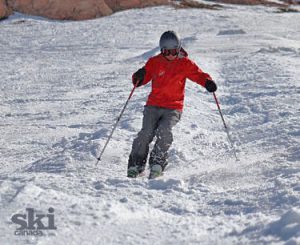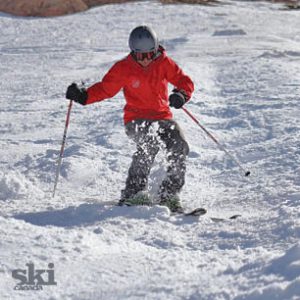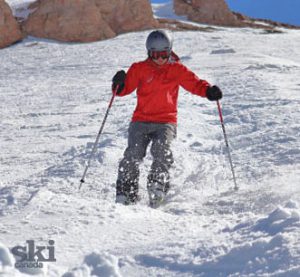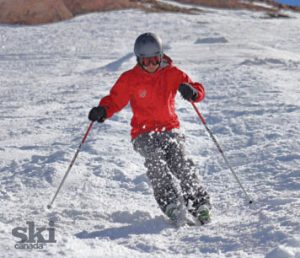Becoming a great skier is about learning from experience, considering past performance, thinking about what went right but, equally important, what went wrong.

Most skiers base their attempts at analysis in outcomes. It’s easy to point to results such as “Holy smokes, I slayed those bumps,” or perhaps more often, “Oh man, I just couldn’t get it together in those moguls.” However, someone who truly wants to improve his or her skiing needs to consider more than just what happened, but why it happened.

All runs, however much you suck while skiing them, can be useful in developing your skiing if considered carefully. As well as thinking about how well you skied those bumps, try to ask yourself what you did to make the run such a good one. Equally, when you have a not-so-awesome bump run, ask yourself what you did differently. And to know that, you need to consider how you moved and balanced over the skis from turn-to-turn and within each turn. In your bump run, for instance, you might have got caught back on the tails of the skis. You know this because you recognized the feeling of your calf pressed up hard against the back of the boot.

Equally, in your awesome run, you probably managed to maintain balance, more or less, over the middle of the ski. You know this because you have come to recognize the feeling of your shin maintaining contact with the front of the boot. It’s essential to develop awareness of what you feel both in terms of internal feedback, such as the shin feeling pressure against the front of the boot, and resulting external cues, such as the skis beginning the new turn more easily because you were able to use the shape of the skis to lead the turning effort. Learn to associate internal and external cues so that your thought process after an awesome run becomes “Man, I slayed those bumps because I maintained some shin contact most of the time and it was really easy to steer the skis into the new turn.”
Balancing more or less in the middle of the ski, and maintaining some contact between the shin and the front of the boot enables the skier to press (or activate) the front of the ski to start a new turn and manage the shape of that turn as it progresses. When in the bumps and you get the sense that “these skis just won’t turn fast enough,” it’s often because you’re pressing on the back of the boot, and therefore the back of the skis, with the tails being the part that ends a turn rather than starts one.

So next time you rip, take a moment to ask yourself what you felt and try to create the same feeling on your next run. And when you suck, try to change your movement pattern to achieve the feeling you created in your awesome run. This process will consolidate your awareness of the relationship between your movements and ski performance, and enable you to develop your skiing more quickly.

Skiing is a sport that is wide open to variation. For every skier there are different adjustments to make. This is where a good teacher can help, by figuring out exactly what move, when, how much and how quickly it can be added to your skiing in order to best improve performance. A great instructor will also help you notice what that new move feels like and how it changes the way the skis move over the snow.



